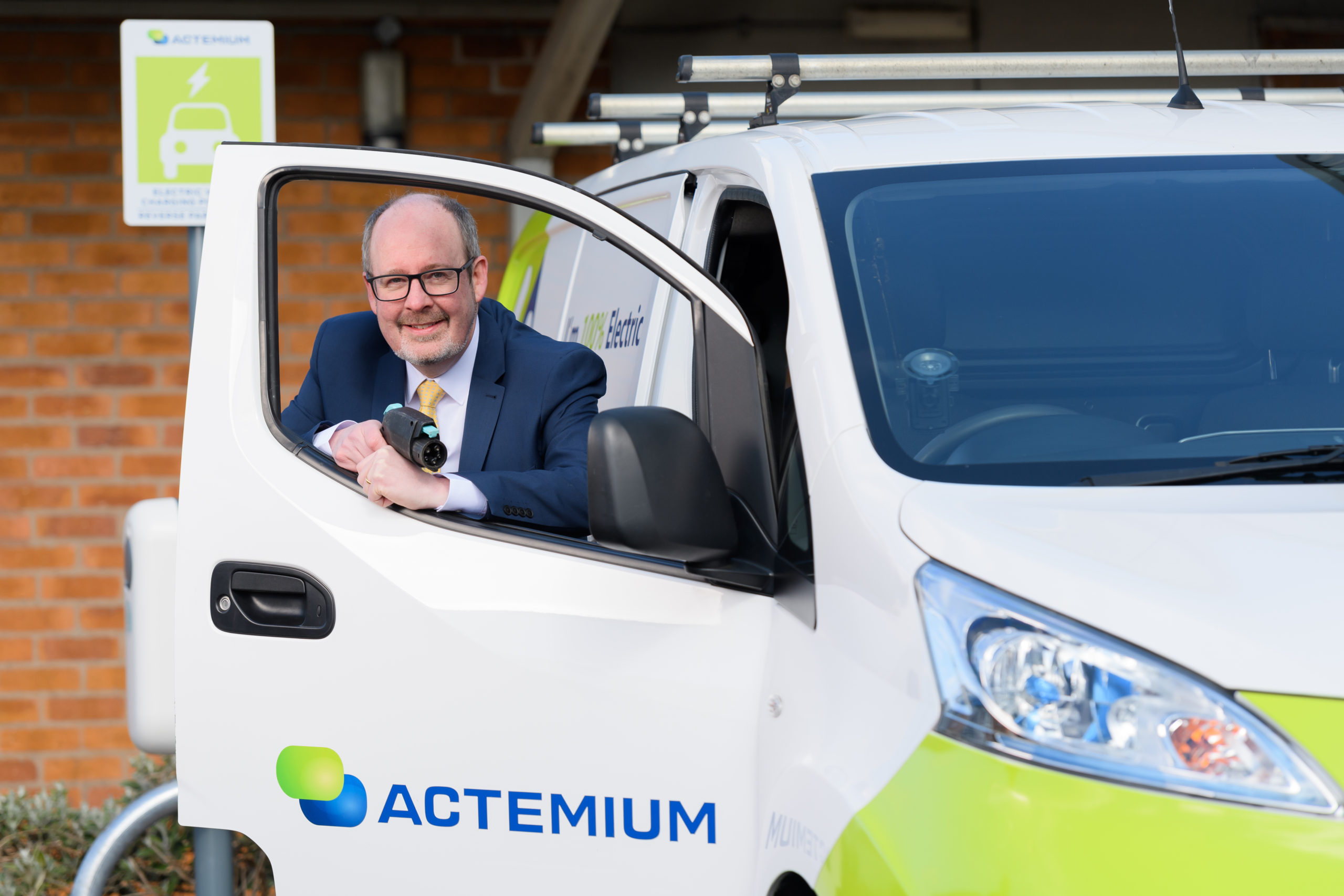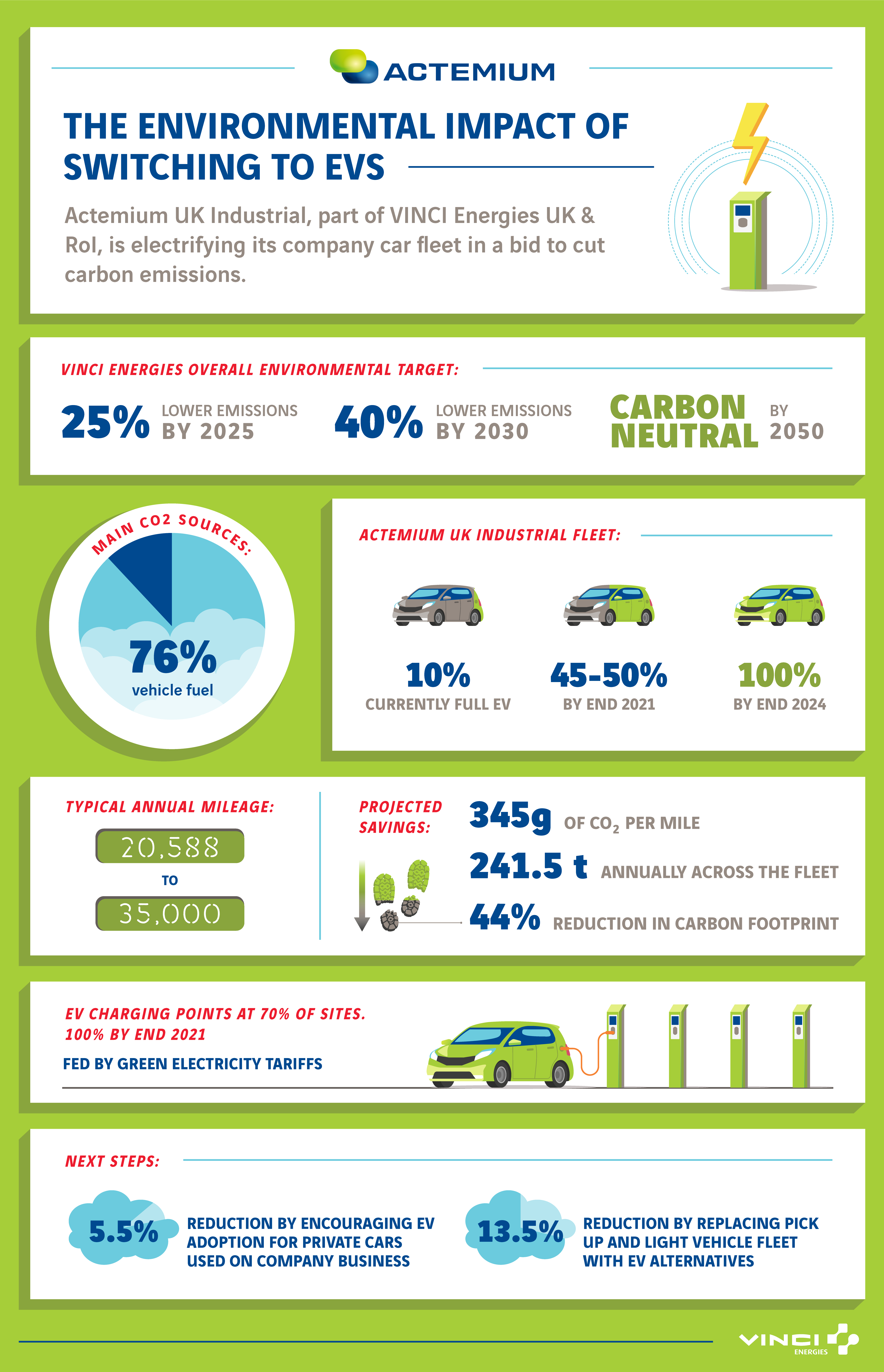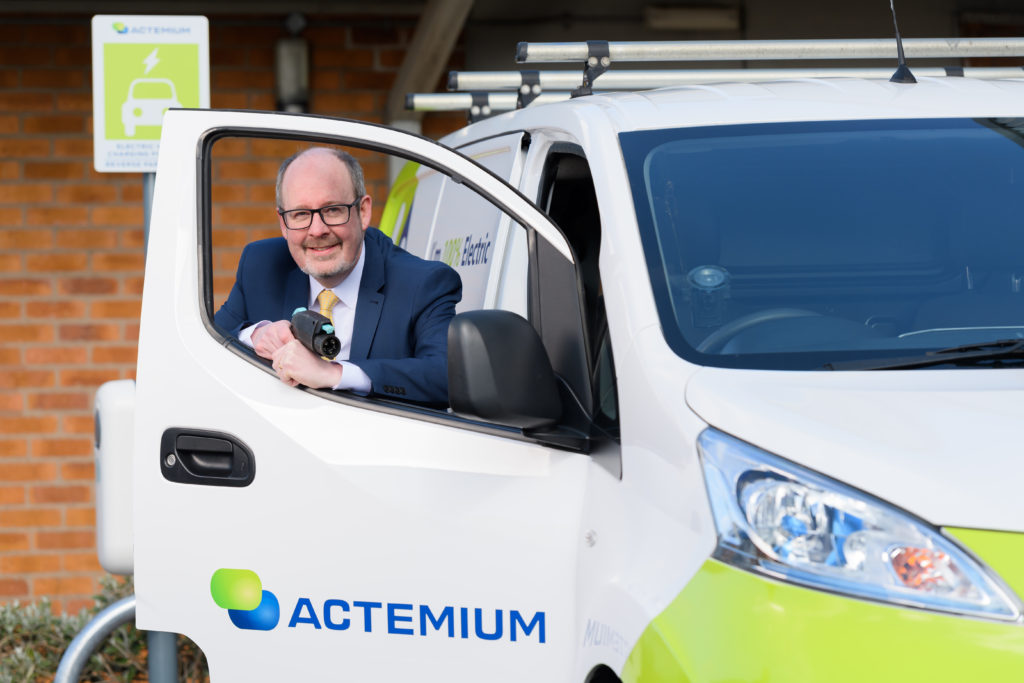Why our company car fleet is going fully electric

As Actemium UK, part of VINCI Energies UK & RoI, announces that all company cars within its industrial business units will be going fully electric, we find out from the organisation’s director Andrew Hunter how this switch was made possible.
WHAT MADE YOU DECIDE TO SWITCH YOUR COMPANY CAR FLEET TO ELECTRIC VEHICLES (EV)?
Environmental care has long been important to us at Actemium UK but a big change came in September 2020 when VINCI Energies UK & RoI launched a new science-based plan to achieve a 25% reduction in carbon emissions by 2025 and reach carbon neutrality by 2050. A lot of work has gone into determining what steps we can take to reduce our emissions and calculating the savings they will generate – and in terms of action, switching our company car fleet to full EVs was a quick win.
WHY WAS SWITCHING YOUR COMPANY CAR FLEET TO EVS A PRIORITY ACTION IN THE VINCI ENERGIES UK & ROI ENVIRONMENTAL STRATEGY?
The Actemium UK industrial perimeter (the collection of business units offering electrical and mechanical services to industry) has one of the largest company car fleets within VINCI Energies UK & RoI so we can make a considerable contribution towards the overall targets relatively quickly. Furthermore, we are in the business of planning and installing EV charging and associated energy storage solutions for customers, so we have the technical expertise to support the fleet. The idea is that we can share our lessons learned and use our EV fleet and charging infrastructures as a model for the rest of VINCI Energies UK & RoI to follow. Becoming an early adopter also sends a strong message to our customers – not only regarding our care for the environment but also our belief in EV technologies and our capabilities as a charging infrastructure provider.

WHAT IS THE TIMELINE FOR SWITCHING THE COMPANY CAR FLEET TO EVS?
10% of our fleet has already been replaced with full EVs since we updated our company car policy in line with the new VINCI Energies UK & RoI environmental strategy. The rest will be replaced as their four-year leases come up for renewal so by the end of this year 45-50% of the fleet will be full EVs and by the end of 2024 the entire company car fleet will be electric.
WHAT IMPACT WILL THIS SWITCH HAVE ON YOUR CARBON FOOTPRINT?
The nature of our business means we have a lot of our teams on the road, regularly travelling an average of 20,000 miles a year servicing customers nationally. Given that switching to EVs could save 345 g of CO2 per mile travelled, an entire EV fleet could generate an annual CO2 saving of 241.5 t – or 44% of the industrial perimeter’s carbon footprint.
WHY IS THIS THE RIGHT TIME TO SWITCH YOUR FLEET TO FULL EVS?
It’s a change we have actually been considering for several years but there were a few obstacles we had to overcome. As I said, our teams travel long distances and there were concerns about range and the availability of fast-charging facilities on the road. Now our people can reliably get to where they need to go with an EV without worrying about where they can recharge and how long it will take. There is also a greater choice of EVs these days and we have actively engaged with our fleet provider to fully embrace EV options with competitive insurance and service packages. A few years ago, our senior contract engineers only had three or four EVs to choose from. Now they have a choice or 60+.
WHY DID YOU GO STRAIGHT TO FULL EVS AND NOT FOR PLUG-IN HYBRID ELECTRIC VEHICLE (PEHVS) AS AN INTERMEDIARY STEP?
We investigated whether PEHVs would be an option but concluded that we would do better to go straight to full electric. Independent tests have shown that you need to keep the battery charge pretty high on a PEHV to get good results from it – and a PEHV could be even less fuel efficient than a diesel-powered car, which is counterproductive considering our aim to reduce carbon emissions. In addition, the Government is considering classing PEHVs in the same tax category as petrol and diesel cars so there would be no financial benefit to our employees in choosing one.
HOW DID YOU MANAGE TO CONVINCE EMPLOYEES THAT SWITCHING TO AN EV COMPANY CAR WAS THE RIGHT DECISION?
Our employees know that switching to EVs is the right thing to do for the environment, but we have also made it worth their while. As I said, we pushed our fleet provider to offer cars that our people would be excited to drive and we changed our company car policy so that a company car could only be electric. We also made the vehicle allowance 20% higher for EVs than for petrol and diesel cars so that those who choose to purchase their own vehicle can get a better car if they go electric. With an EV there is also a much lower P11D burden. That could be £4,000-£7,000 in tax that our employees don’t have to pay if they choose an EV. And we offer free charging for employees at our offices so there are no fuel costs to pay. They can end up much better off financially with an EV – effectively a salary increase. Finally, the performance of today’s EVs is so good, even our diehard petrolheads have been converted!
WHAT CHARGING INFRASTRUCTURE DO YOU HAVE IN PLACE?
We currently have charging facilities at 70% of our locations within the Actemium UK industrial perimeter and will have them available at all sites by the end of 2021. We have planned and installed the charging infrastructure ourselves via our EV Charging specialist Business Unit, Actemium EV Coventry. The cost of electricity for charging is lower than our fuel costs, which is good for us financially as well as for the environment. As part of the VINCI Energies UK & RoI science-based plan to reach carbon neutrality, we have also planned to replace all our standard electricity contracts with green tariffs to support the UK and Ireland’s overall transition to renewable energy.
HOW DID YOU PLAN THE NUMBER AND TYPE OF CHARGING POINTS?
We did the same for ourselves as we would for our customers. We undertook an EV suitability study in which we matched the number, size and type of vehicles in the fleet with EV equivalents and then used real-world data from a special telematics system to understand how far they travel and when. This is really powerful insight as you can start tailoring the charging hardware according to the duty cycles and how much and how fast the vehicles need to charge.
WHAT ARE THE NEXT STEPS IN YOUR EV JOURNEY?
Next we will be encouraging employees to choose EVs for private cars used on company business, the grey fleet, and switch our van fleet to electric. This has been calculated to reduce our carbon footprint by a further 5.5% and 13.5% respectively. We currently run three fully electric vans and plan to add three more in 2022.
WHAT WOULD YOU SAY TO OTHER BUSINESSES CONSIDERING SWITCHING THEIR COMPANY CAR FLEET TO EVS?
We would absolutely encourage other businesses to switch their company car fleets to EVs too. We appreciate that installing charging infrastructure might seem daunting, but we can guide you through it. Through early consulting work, we can help you choose a workplace EV charging solution that’s cost effective, optimised for your needs and can be expanded in the future. Then we can install the charging points, as well as any new grid connections or energy storage devices you need. With us, the transition to EV fleets has never been easier.

